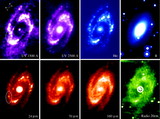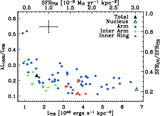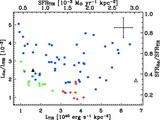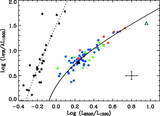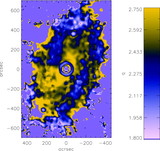Image Details
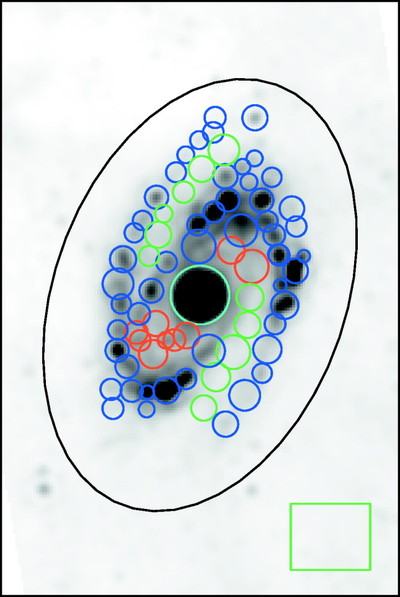
Caption: Fig. 3.
Regions for which fluxes were extracted shown superimposed on the M81 24 μm image. The size of the extraction aperture is reflected in the size of the circle for each region. The average diameter of the apertures is 1.2 kpc. The color coding of the regions is given in Fig. 4. The green box in the lower right corner gives the sky aperture. At 70 μm, the sky noise contribution to the uncertainty in the average aperture is ~2 mJy. This shows that the linear streaks are not affecting the 70 μm aperture measurements as all the fluxes are above 80 mJy. The field of view of the image is ﹩20^{\prime }\times 30^{\prime }﹩.
Copyright and Terms & Conditions
© 2004. The American Astronomical Society. All rights reserved. Printed in U.S.A.



